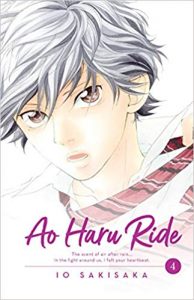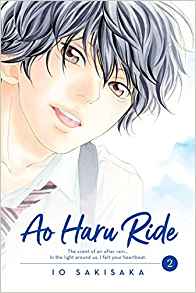Ao Haru Ride Volume 5 by Io Sakisaka
One of the reasons why I like Ao Haru Ride is the way it effectively gets into the agonizing headspace of first love, where tiny decisions or comments made in a moment fraught with tension end up propelling a relationship forward or dooming it to the status quo. It takes some superior authorial skills to portray the inner soliloquies of teenagers as consistently sympathetic but Sakisaka has the chops to make the reader fully invested in all of these charged interactions. Futuba is still struggling with her feelings towards Kou, and it looks like things are going to go to the next level when he actually asks her out to a summer festival.
Futuba builds up the prospect of festival attendance in her mind, thinking it is a perfect time to tell him what she feels, but Kou ends up canceling and before they know it they are back in school. Kou seems more distracted than usual, spending a bunch of time texting on his phone. Ao Haru Ride is heading into familiar shoujo territory as Toma keeps popping up around Futuba, quickly realizes that she likes Kou, but still lingers around since it is clear that they haven’t started a relationship yet. While Kou isn’t asking Futuba out again, he’s clearly getting annoyed at Toma’s consistent presence. Kou’s distraction is due to his trying to help an old friend as they get adjusted at a new school, and any shoujo reader can tell that this is going to introduce a new ongoing complication to prevent Futuba and Kou getting together. Sakisaka is great at portraying the agony of the emotional calculations Futuba goes through, as she thinks if she hits on a magic moment it will be the right time to confess to Kou. Meanwhile, Toma’s keen observations of Futuba show her to be different from the tomboyish self image she’s struggled to maintain. While the plot points of summer festivals and school activities are well-worn shoujo territory, I’m captivated by these particular characters, with all their quirks and awkward moments.






Recent Comments